How Pain Is Measured
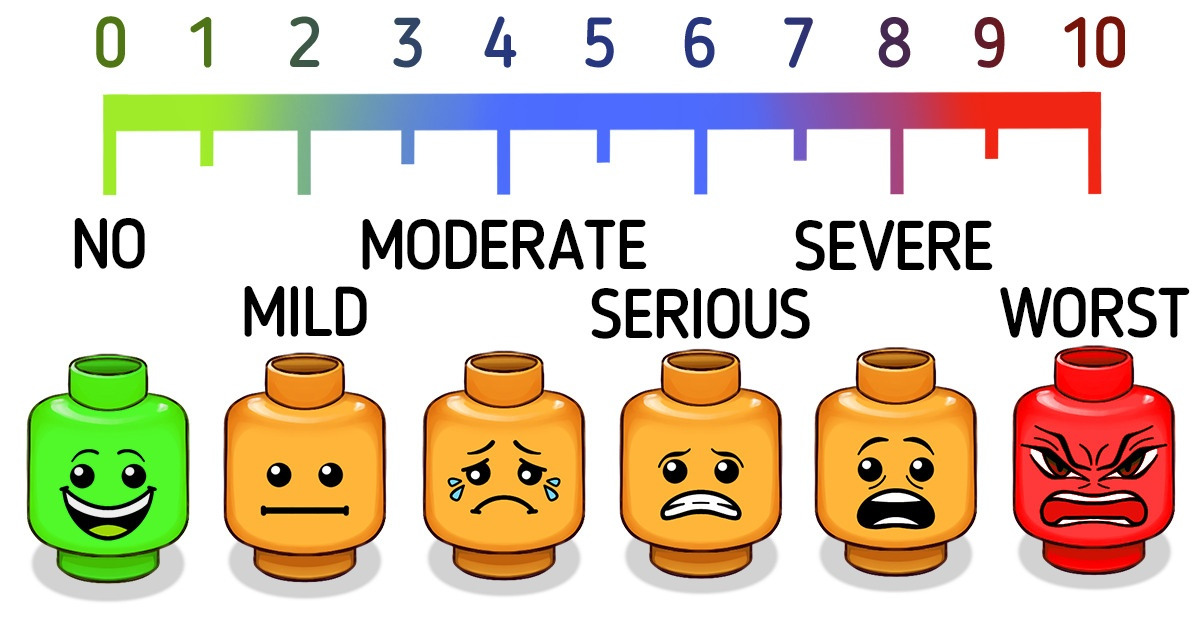
Pain is a subjective sensory experience or symptom that varies from person to person. It sometimes encourages us to be more careful in the future and helps us expedite our healing process. It can’t be visualized with a single number, nor can it be measured immediately. To evaluate pain levels and find the right treatment methods, we need to use a common language.
5-Minute Crafts will show you how pain is measured and which pain scale is useful for the correct diagnosis.
What physical pain is, according to science

Pain is a feeling activated in the nervous system that tells you something may be wrong. It reveals itself in different ways — sometimes it’s steady, sharp, stabbing, aching, or pinching, while other times it’s just mild or dull, and it can be unbearable or constant. It may cause nausea, dizziness, weakness, or drowsiness as well as anger, depression, mood swings, or irritability. It may change your lifestyle, impact your job and relationships, and more.
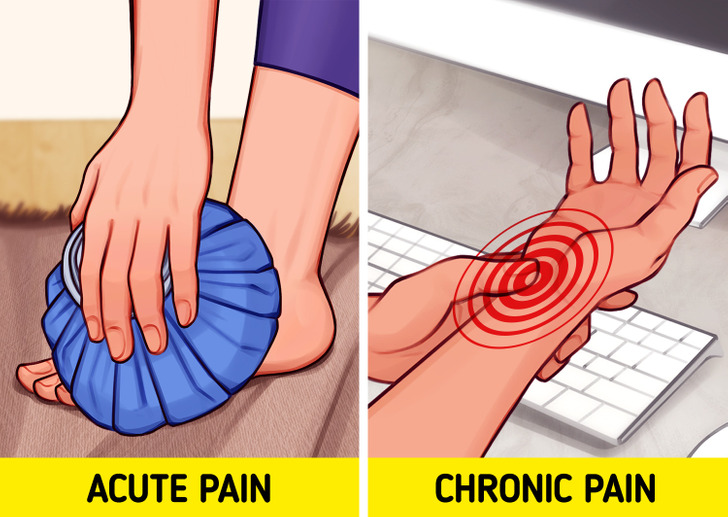
There are several types of pain, such as somatic, visceral, and neuropathic. In all of them, pain can be:
- Acute pain is usually severe (intense), short-lived, and signals that your body has been injured. It often manifests in ways that can be easily described and observed.
- Chronic pain is typically present for a long time, more than 6 months, and ranges from mild to severe. It’s often the result of a disease or an ongoing treatment.
What a pain scale is
A pain scale is a tool that doctors use to help assess a person’s pain along with certain aspects of their condition, such as duration, intensity, and type. It allows them to make an accurate diagnosis, create a treatment plan, and measure the effectiveness of treatment. Pain scales exist for all people of all ages and people with impaired skills too. There are 2 types of pain scales: unidimensional and multidimensional.
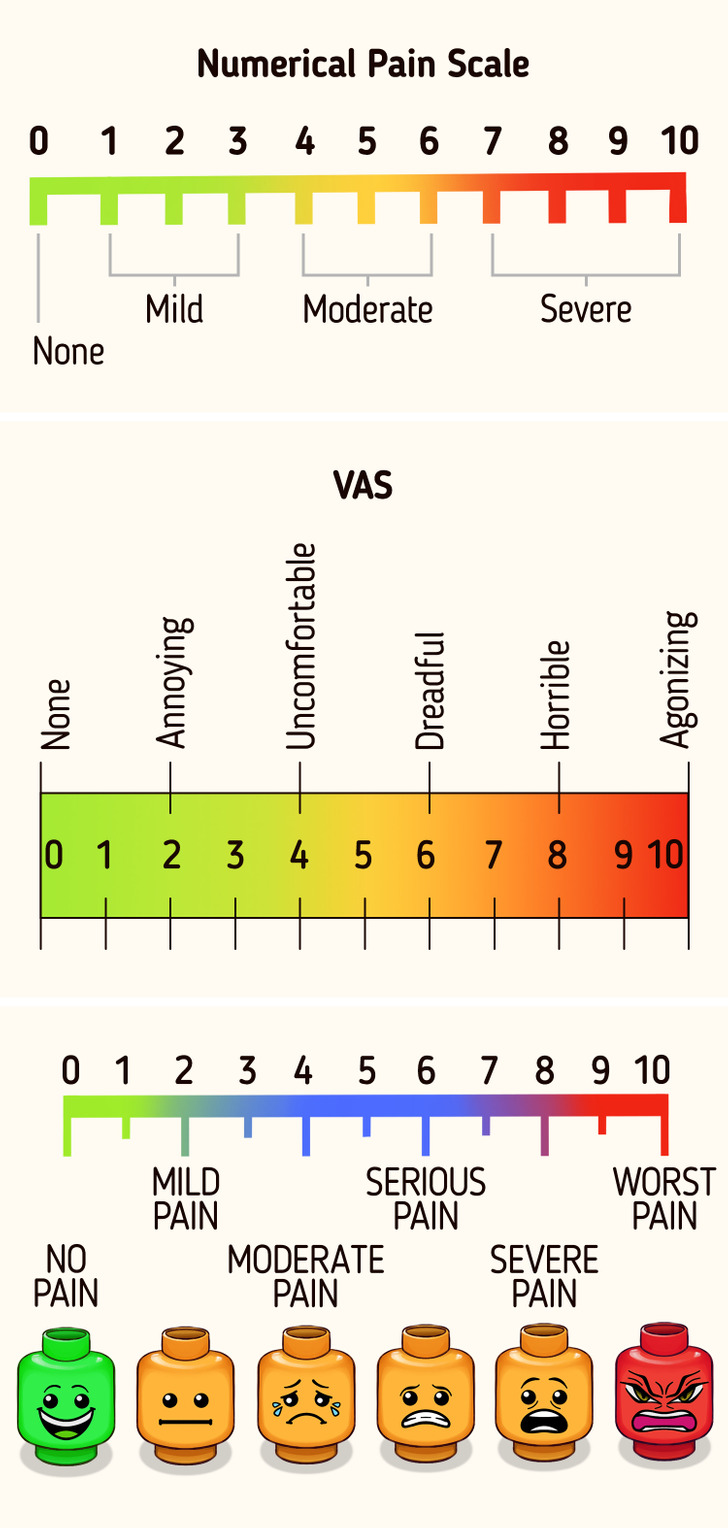
Unidimensional pain scales are used to describe and rate the intensity of the (self-reported) pain, and some of them are:
- Numerical rating scales (NRS) are the most commonly used for those over age 9 in rating the pain on a scale ranging from 0 to 10 or from 0 to 5. While 0 means no pain, 5 or 10 means the worst pain imaginable.
- Visual analog scales (VAS) show a 10-centimeter line printed on a piece of paper where one end marks “no pain,” and the other end is “extreme pain” or “agonizing pain.” The person marks a spot, or puts an X to show their pain intensity. Then the doctor measures the line with a ruler to estimate the value. This method is used for children ages 8 and above.
- The Wong-Baker Face Pain Rating Scale is used for adults and children over the age of 3. In this method, the pain scale is visual and numbered. A child is presented with 6 face pictures with various expressions and asked to choose the face that is most consistent with his or her pain level.
- Categorical scales are used to measure the pain intensity. Words, as well as visuals, are used to describe and rate the pain.
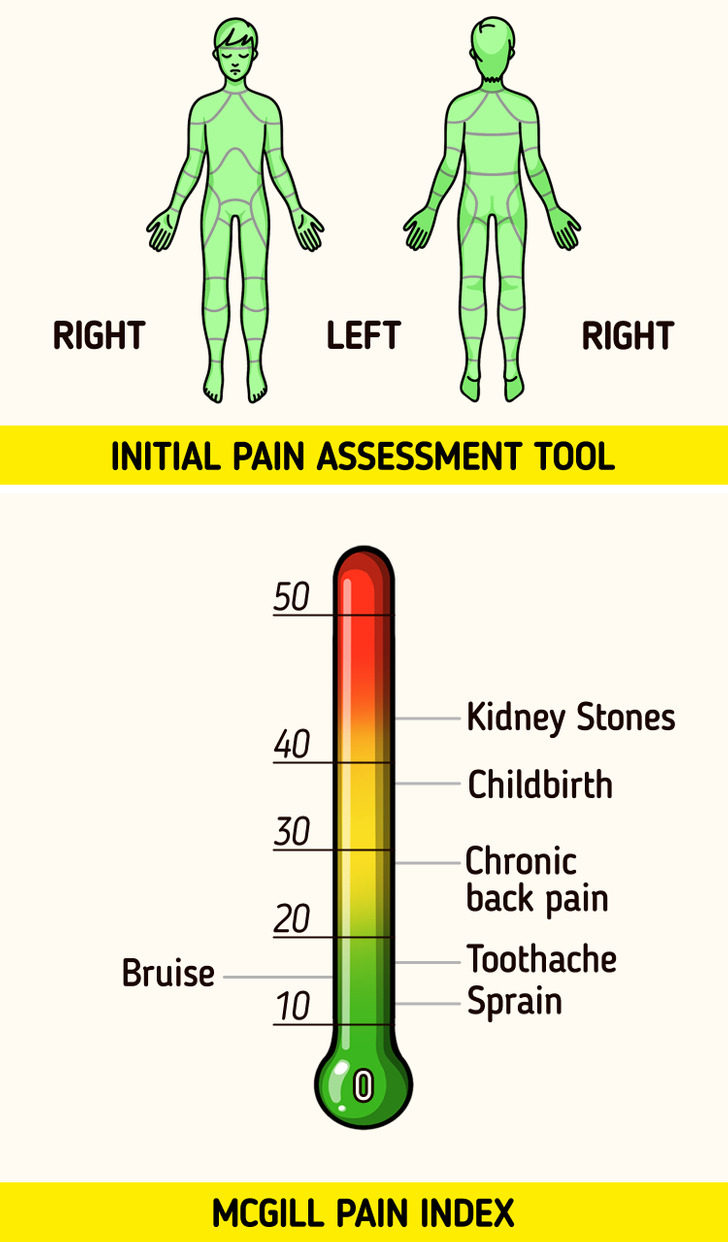
Multidimensional pain assessment tools provide valuable information about multiple sides to a patient’s pain. Because they’re more thorough and cumbersome, they can be a bit inconvenient in a hectic hospital setting. The most commonly used ones are:
- The initial pain assessment tool is designed for initial evaluation use. Using a paper diagram that has the body, patients can mark the location of their pain.
- The brief pain inventory (BPI) tool helps measure pain intensity as well as how the pain affects the person’s mood, sleep patterns, interpersonal relationships, etc.
- The McGill Pain Questionnaire (MPQ), also known as the McGill Pain Index, is one of the common multidimensional pain scales, which is based on choosing words out of 20-word groups in a questionnaire form, and it assesses how a person feels the pain based on the words they use.
Bonus: why we feel pain differently in different parts of our bodies
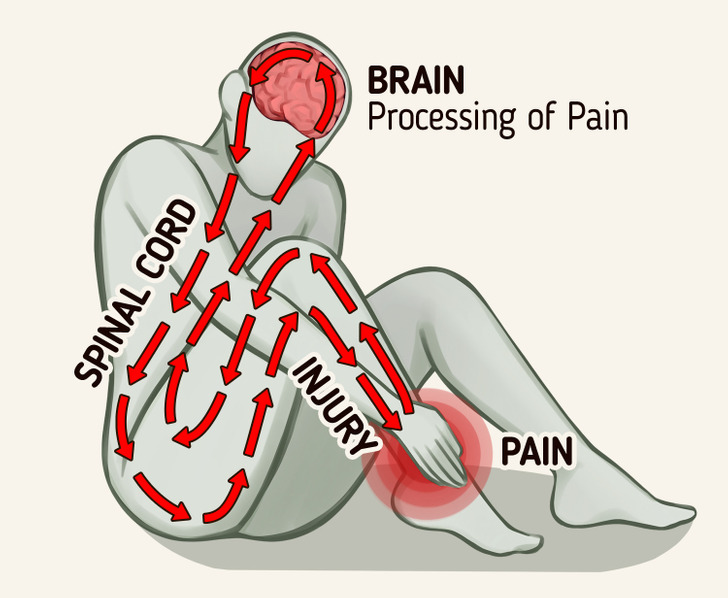
Different parts of our bodies experience pain differently. Take skin pain, for example, which feels irritable or spiked. It’s relatively easy to identify compared to the pain of intestinal cramps. Because the nerves in our bodies are all connected and wired, sometimes our brains send a pain signal to a different part of our body than the area from where it stems. As such, when you have heart pain (a heart attack), you can interpret it in your left arm.
This is because the nerves branching from the heart and the nerves coming from the arm send their signals to the same brain cells. Therefore, the brain can’t isolate the origin (source) of the pain. In medicine, this kind of pain is called ’’referred pain.’’